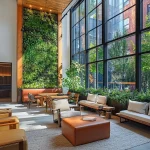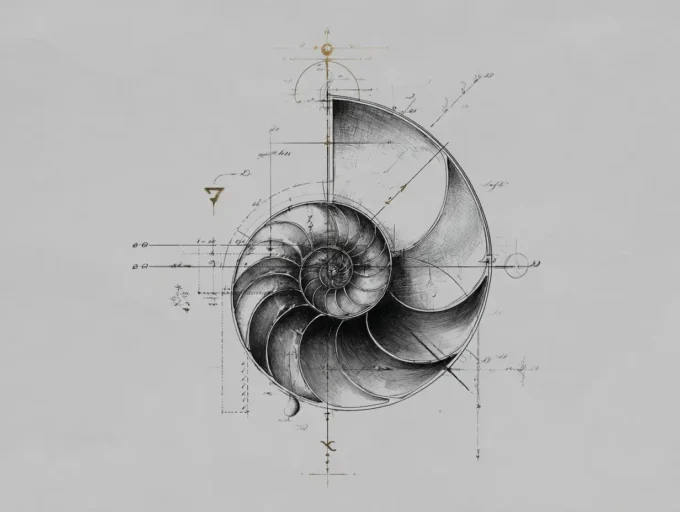In recent years, we’ve seen a remarkable shift in the architectural landscape, thanks to the advent of innovative tools and technologies. These new architectural tools are revolutionizing the design process, allowing us to push the boundaries of creativity and efficiency. From advanced 3D modeling software to virtual reality, the way we conceptualize and execute projects has fundamentally changed.
As we embrace these cutting-edge tools, our ability to visualize, iterate, and refine designs has reached unprecedented levels. These technologies not only streamline workflows but also foster greater collaboration among architects, engineers, and clients. The result? More dynamic, sustainable, and aesthetically pleasing structures that meet the demands of our ever-evolving world.

Impact on Traditional Design Processes
Architectural tools are generating significant changes in traditional design processes by enhancing efficiency and creativity.
Streamlined Project Planning
Digital tools streamline project planning by integrating various processes into a unified system. Building Information Modeling (BIM) allows us to create cohesive project frameworks with precise digital representations. These representations improve coordination among teams, reducing errors and ensuring accuracy. Project timelines become more predictable due to efficient resource allocation and real-time updates. For example, changes in design automatically reflect in material quantities and cost estimates, saving time and reducing wastage.
Enhanced Visualization Techniques
Advanced visualization techniques transform how we present and refine designs. Virtual reality (VR) and augmented reality (AR) enable immersive walkthroughs, providing clients with a real-time sense of the final structure. These tools foster better client communication and more informed decision-making. 3D modeling software helps create detailed and dynamic visualizations, offering multiple perspectives and iterations. For instance, architects can show different lighting conditions or material finishes, helping stakeholders visualize the final outcome accurately.

Key Architectural Tools Transforming Design
New architectural tools are revolutionizing how we approach design, offering advanced capabilities that enhance creativity, efficiency, and precision.
New tools have reshaped architecture, leading to a transformative design process. These tools provide architects with advanced capabilities to create complex, functional, and visually impressive structures. Several notable tools have emerged in recent years, including Building Information Modeling (BIM), 3D printing, and parametric design software.
Building Information Modeling (BIM)
Building Information Modeling (BIM) is a powerful tool transforming architecture. It creates detailed digital representations of building designs, improving accuracy and coordination. Using BIM, architects can simulate real-world performance, identify potential problems, and optimize designs before construction. For instance, BIM enables seamless collaboration among architects, engineers, and contractors, reducing errors and delays. According to a National Institute of Building Sciences report, adopting BIM can reduce project costs by up to 20%.
BIM has revolutionized how we approach architectural projects. This tool enables precise digital representations of buildings, allowing for better design visualization, coordination, and collaboration. BIM software helps identify potential design conflicts before construction starts, reducing errors and saving costs.
Virtual Reality (VR) and Augmented Reality (AR)
VR and AR are enhancing architectural visualization. These technologies allow immersive, real-time walkthroughs of design models, providing clients with a better understanding of spatial relationships and aesthetics. For example, VR can showcase different design options, helping clients make informed decisions. AR overlays digital information onto the physical world, facilitating on-site comparisons and adjustments. A study by the American Institute of Architects found that VR/AR can increase client satisfaction by 25% due to better design comprehension.
VR and AR tools have significantly improved how we visualize and present architectural designs. VR immerses users in a fully digital environment, allowing a comprehensive walkthrough of a project before it’s built. AR overlays digital information on the physical world, aiding in real-time design adjustments during construction.
These advanced tools are transforming modern architecture, enabling us to create more sustainable, innovative, and efficient designs. As we continue to integrate these technologies, the architecture field will keep evolving, setting new standards for creativity and precision.

3D Printing
3D printing has brought a new dimension to architectural model creation. It allows us to create accurate scale models quickly, facilitating better design communication and iterative testing. With 3D printing, complex geometries can be easily produced, pushing the boundaries of traditional architectural design.
Parametric Design Software
Parametric design software allows for the creation of adaptable and dynamic structures. These tools enable architects to input specific parameters and generate multiple design iterations quickly. This approach enhances creativity and efficiency, leading to innovative and optimized design solutions.
Generative Design Software
Generative design software introduces a unique approach to design creation. It uses algorithms to generate multiple design iterations based on specific parameters and constraints. This tool enhances creativity by exploring a vast array of design possibilities rapidly. For example, an architect can input constraints like site conditions, material types, and budget, and the software will provide several optimized design solutions. Autodesk’s study reveals that generative design can accelerate the design process by 30%, allowing architects to focus more on innovation and less on manual adjustments.

Benefits of Integrating New Tools
Integrating new architectural tools significantly impacts the design process. These tools offer various benefits, enhancing how we collaborate, streamline workflows, and improve precision.
Improved Collaboration
New tools foster enhanced collaboration among architects, engineers, and clients. BIM provides a unified digital environment, enabling all stakeholders to access and update information in real time. This minimizes communication gaps and reduces misunderstandings. For instance, 3D modeling software allows team members to visualize changes instantly, facilitating prompt feedback and iterative improvements. VR and AR further enhance collaboration by enabling immersive design reviews where clients can experience spaces before construction begins.
Increased Efficiency And Accuracy
Modern tools substantially increase efficiency and accuracy in architectural projects. BIM sharply reduces errors by offering precise, comprehensive digital representations of buildings, potentially decreasing project costs by up to 20%. Parametric design software accelerates the design process by generating multiple iterations based on set parameters, allowing architects to focus on innovation. 3D printing produces accurate scale models quickly, improving design communication. These tools ensure greater precision and quicker turnarounds, making project timelines predictable. VR and AR contribute to making informed decisions by providing detailed visualization, increasing client satisfaction by 25%.
Integrating these advanced tools into our design processes sets new benchmarks for efficiency, accuracy, and innovation in architecture.

Challenges in Adoption
Innovative architectural tools offer many benefits, yet their adoption presents several challenges. We must address these issues for a smoother transition.
Learning Curve and Training
The complexity of new architectural tools demands significant training. Architects must master BIM, 3D printing, and parametric design software to maximize their potential. For example, BIM requires understanding intricate digital representations and interoperability between systems. 3D printing designers need know-how to create models that follow the technical constraints. Organizations should invest in comprehensive training programs to ease this transition, but this involves time and resources. Continuous learning ensures that professionals keep up with advancements, yet it can hinder productivity initially.
Cost Considerations
Adopting new tools entails substantial costs. Initial investments include software licenses, hardware upgrades, and training expenses. For instance, high-end VR systems can cost upwards of $3,000 per unit. There are also recurring costs for software updates and maintenance. Smaller firms may find these expenses particularly burdensome, limiting their ability to compete. Organizations must weigh these costs against the long-term benefits of enhanced efficiency and reduced errors. Strategic planning and budgeting are crucial to manage these investments effectively.
Case Studies of Innovative Architectural Projects
The Edge in Amsterdam
The Edge in Amsterdam uses BIM software for design and construction. With BIM, architects created detailed digital representations of the building, enabling precise planning and coordination. The technology improved efficiency, allowing various stakeholders to collaborate seamlessly. The Edge also incorporated advanced sustainability features, thanks to detailed simulations and analyses conducted using BIM.
Shanghai Tower
The Shanghai Tower showcases the impact of parametric design. Architects used this software to explore multiple design iterations, generating optimal building forms based on specific environmental and structural parameters. This process not only accelerated design but also led to an iconic twisted form that enhances wind resistance, resulting in enormous energy savings.

Oculus at the World Trade Center
The Oculus in New York utilized 3D printing extensively during its design phase. Architects used 3D printed models to refine complex geometries and communicate design intentions clearly. This approach allowed for rapid prototyping and exact scale models, ensuring the innovative design was both feasible and visually stunning. It also facilitated effective collaboration among the design, engineering, and construction teams.
Seattle Central Library
Seattle Central Library exemplifies the use of VR in architectural design. By using VR, architects provided realistic walkthroughs of different design iterations to stakeholders. This immersive visualization helped in making informed decisions and achieving a final design that meets functional and aesthetic requirements. VR enabled clients to experience the space as if it were already built, enhancing satisfaction and reducing post-construction modifications.
Elbphilharmonie in Hamburg
Elbphilharmonie in Hamburg incorporates advanced BIM and VR tools in its design and construction. BIM ensured detailed planning, reducing errors and improving cost management. VR walkthroughs were used to showcase the design to stakeholders, ensuring clarity and approval. This project’s successful integration of innovative tools highlights the potential for significant advancements in architectural design and execution.

Conclusion
New architectural tools are revolutionizing the design process. By integrating advanced technologies like BIM, 3D printing, and parametric design software, we’re seeing unprecedented levels of creativity and efficiency. These tools not only streamline workflows but also enhance collaboration and precision.
While the initial investment and learning curve can be challenging, the long-term benefits are undeniable. Enhanced visualization, real-time updates, and reduced errors lead to more dynamic and sustainable structures. Our industry must embrace these innovations to stay competitive and push the boundaries of modern architecture.
The case studies we’ve explored demonstrate the tangible impact of these tools on real-world projects. From The Edge in Amsterdam to the Morpheus Hotel in Macau, the evidence is clear: advanced architectural tools are setting new standards for efficiency and creativity. As we continue to adopt and refine these technologies, the future of architecture looks brighter than ever.
- advanced architecture techniques
- architectural tools trends
- architecture innovation
- architecture planning tools
- architecture project development
- architecture software trends
- changing architecture landscape
- cutting edge architectural technology
- innovative architecture software
- latest tools in architecture
- modern architecture tools
- new architectural technology
- project development tools architecture
- transforming architecture tools
















Leave a comment